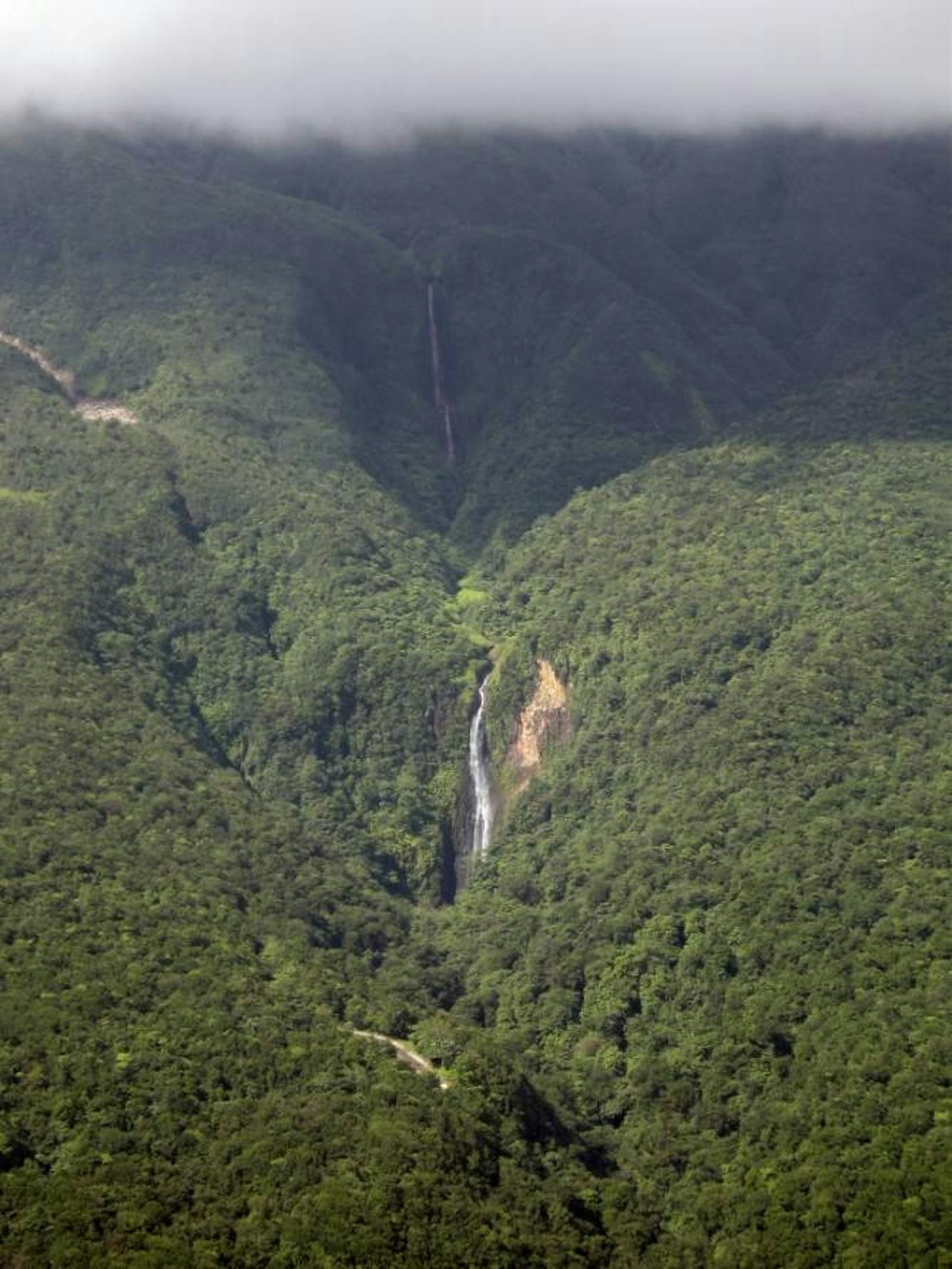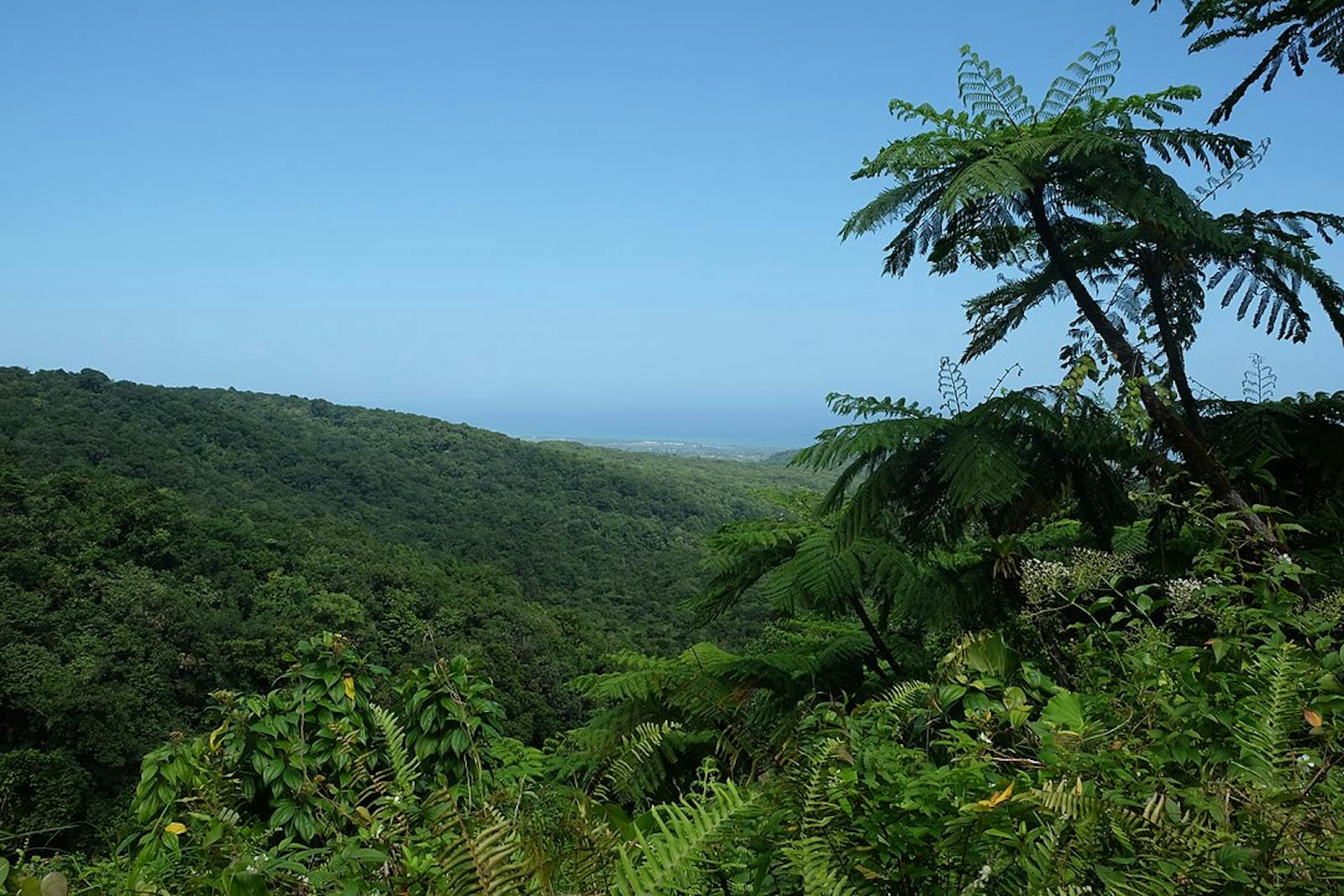Leeward Islands Moist Forests
The ecoregion’s land area is provided in units of 1,000 hectares. The protection goal is the Global Safety Net (GSN1) area for the given ecoregion. The protection level indicates the percentage of the GSN goal that is currently protected on a scale of 0-10.
Bioregion: Caribbean Islands (NT26)
Realm: Central America
Ecoregion Size (1000 ha):
99
Ecoregion ID:
475
Conservation Target:
99%
Protection Level:
8
States: France, United States Virgin Islands, Saint Kitts and Nevis, Montserrat, Antigua and Barbuda, British Virgin Islands
The Guadalupe big brown bat is one of three bat species strictly endemic to the island of Guadalupe, within the Leeward Islands Moist Forests ecoregion. During the day it roosts in gallery forests around creeks and streams, and at night it feeds on insects. Gallery forests are important for bats as they offer a “tree free” corridor allowing them to fly freely and have some space to move—whereas in the dense forest they rely heavily on their echolocation to ensure they do not hit a vine or branch while trying to catch an elusive moth. The Guadalupe big brown bat is the largest member of its genus.
This ecoregion is found in various proportions on the Caribbean’s Leeward Islands characterized by rugged volcanic mountains covered in moist tropical forest. Specifically, this ecoregion covers approximately 85% of Basse Terre of Guadeloupe, the central and mountainous portions of Montserrat, St. Kitts, Nevis, small southern portions of Antigua, and western portions of the U.S. and British Virgin Islands. All of the Leeward Islands lie within the trade-winds belt resulting in a subtropical climate. Islands with sufficient relief receive adequate rainfall, but those with a more subdued topography tend to be dry to semi-arid. The main hurricane route passes through these islands and influences vegetation, especially broadleaf forests.

The flagship species of the Leeward Islands Moist Forests ecoregion is the Guadalupe racoon. Image credit:Creative Commons
The Caribbean is an important biological region due to its rich vegetation and the large number of endemic flora and fauna. The West Indies have about 200 endemic plant genera. The moist forests of this ecoregion primarily consist of Miconia and Clusia spp., both members of the native tropical flowering plant family ranging from shrubs to medium sized trees. In undisturbed regions the large gommier tree is prevalent. In areas above 600 m the main vegetation are palms, especially the mountain cabbage palm. The lack of well-developed forest is attributed to natural disturbances from hurricane opening up the canopy, allowing light to reach second growth vegetation.
The Leeward Islands are similar to other Caribbean islands in having a relatively high degree of island-endemism. Bats are the most common mammal to this ecoregion. Guadalupe has ten species of bat, among them the endemic Guadalupe big brown bat and Thomas’s yellow shouldered bat. Also endemic is the endangered subspecies Guadalupe raccoon, which resides in mangrove areas and habitats above 300 m. The forests of this ecoregion are important for both regional and island endemic bird, reptile, and amphibian species.
Conservation measures vary significantly from island to island. On the smaller St. Kitts and Nevis there are no wildlife sanctuaries, protected wildlife areas, wildlife officers, or resource management programs for wildlife. Likewise, in Montserrat, there is no backed legislation for establishing and managing natural areas, nor is there any governmental organization with responsibilities for wildlife conservation. In contrast, Guadeloupe has the same legislation as France that applies to the establishment of national parks and reserves resulting in several protected areas. The US Virgin Islands have protected approximately 19% of their area and the British Virgin Islands have protected 2.1% of their area as terrestrial parks.
Threats to this ecoregion are similar across most of the Leeward Islands. They include the lack of financial and technical resources to manage the environment, deforestation, and conflict of interests in natural resources between local and national levels. An additional concern is the lack of coordinated government policies on conservation. Other stresses directly affecting wildlife are agricultural development, land alteration from mining, loss of trees to charcoal burning, infrastructure to accommodate population increases, tourism, and introduced animals and plants.
The priority conservation actions for the next decade will be to: 1) improve local resource efficiency through financial and technical advising; 2) regulate the mining industry and reclaim or recover available habitats for protection; and 3) standardize and coordinate environmental policies for all the Leeward islands.
Citations
1. Armstrong, S. 2018. Islands of the Lesser Antilles in the Caribbean. https://www.worldwildlife.org/ ecoregions/nt0134 Accessed June 29th, 2018.
2. Stoffers, A. L. 1993. Dry coastal ecosystems of the West Indies. In E.van der Maarel (editor), Ecosystems of the world 2B: dry coastal ecosystems Africa, America,Asia and Oceania. Elsevier Science Publishers, B.V., Amsterdam.
3. Beard, J. 1949. The natural vegetation of the Windward and Leeward Islands. Oxford: Clarendon Press.




